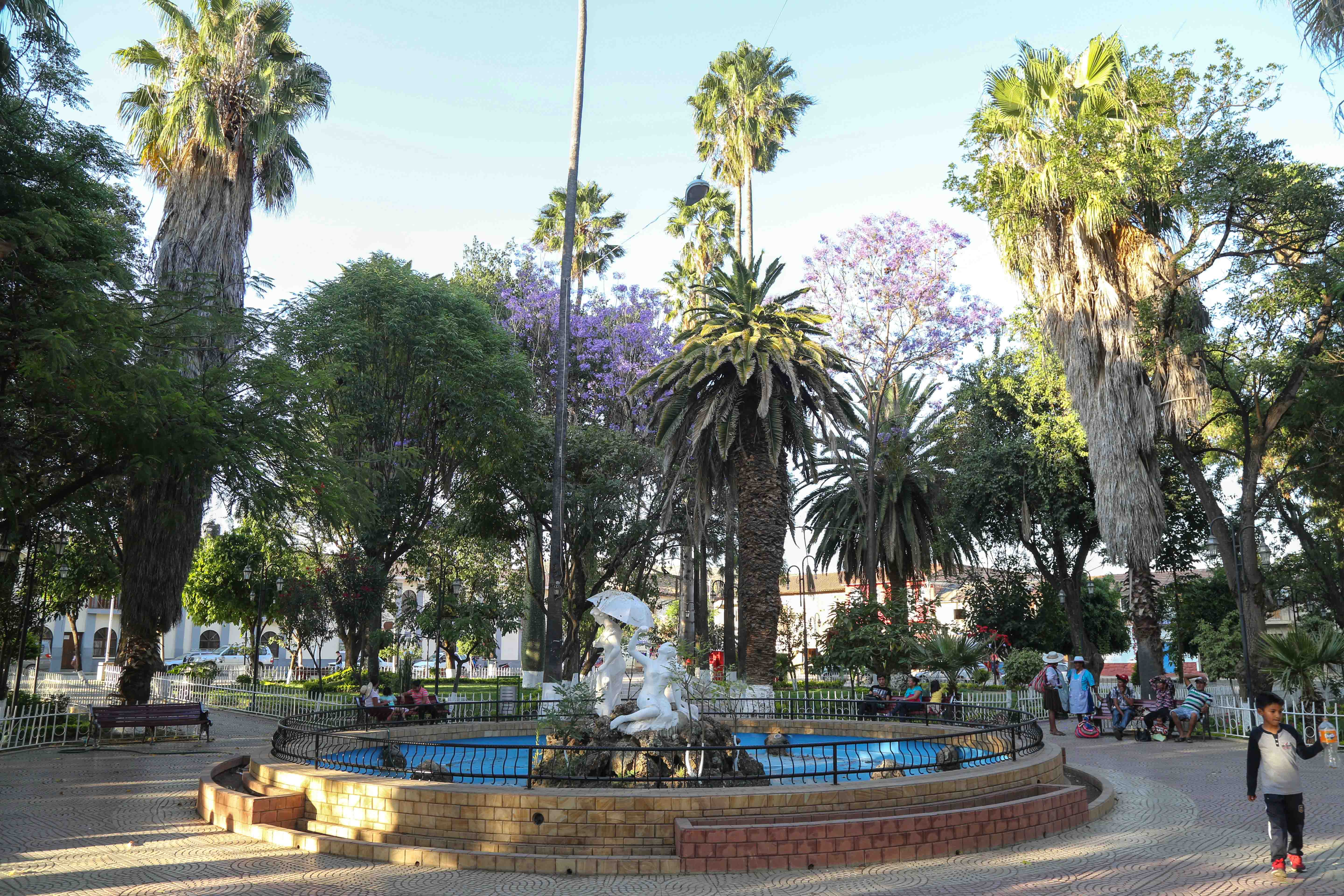Mizque on:
[Wikipedia]
[Google]
[Amazon]
 Mizque, Misk'i (from
Mizque, Misk'i (from
Instituto Nacional de Estadística
(Spanish)
Map of Mizque Province
Populated places in Cochabamba Department {{CochabambaBO-geo-stub
 Mizque, Misk'i (from
Mizque, Misk'i (from Quechua
Quechua may refer to:
*Quechua people, several indigenous ethnic groups in South America, especially in Peru
*Quechuan languages, a Native South American language family spoken primarily in the Andes, derived from a common ancestral language
**So ...
: ''misk'i'', meaning "sweet") is a town in the Cochabamba Department
Cochabamba ( ay, Quchapampa Jach'a Suyu, es, Departamento de Cochabamba , qu, Quchapampa Suyu), from Quechua ''qucha'' or ''qhucha'', meaning "lake", ''pampa'' meaning "plain", is one of the nine departments of Bolivia. It is known to be the ...
, Bolivia. It is the capital of the Mizque Province. Mizque is located in the valley of the Mizque River
The Mizque River (Quechua language, Quechua ''misk'i'' sweet) is a river of Bolivia in the Cochabamba Department. It is a tributary of Río Grande (Bolivia), Río Grande.
See also
*List of rivers of Bolivia
Further reading
*Rand McNally, The ...
, one of the main tributaries of the Río Grande
The Rio Grande ( and ), known in Mexico as the Río Bravo del Norte or simply the Río Bravo, is one of the principal rivers (along with the Colorado River) in the southwestern United States and in northern Mexico.
The length of the Rio ...
.
Historically, it was located in the region of Upper Peru
Upper Peru (; ) is a name for the land that was governed by the Real Audiencia of Charcas. The name originated in Buenos Aires towards the end of the 18th century after the Audiencia of Charcas was transferred from the Viceroyalty of Peru to t ...
, and was a ''corregimiente'' dependent on Santa Cruz de la Sierra
Santa Cruz de la Sierra (; "Holy Cross of the Mountain Range"), commonly known as Santa Cruz, is the largest city in Bolivia and the capital of the Santa Cruz department.
Situated on the Pirai River in the eastern Tropical Lowlands of Bolivia ...
until 1783, when it became an independent town of the ''Intendencia de Cochabamba'', in the Viceroyalty of the Río de la Plata
The Viceroyalty of the Río de la Plata ( es, Virreinato del Río de la Plata or es, Virreinato de las Provincias del Río de la Plata) meaning "River of the Silver", also called " Viceroyalty of the River Plate" in some scholarly writings, i ...
. During the Spanish American wars of independence
The Spanish American wars of independence (25 September 1808 – 29 September 1833; es, Guerras de independencia hispanoamericanas) were numerous wars in Spanish America with the aim of political independence from Spanish rule during the early ...
, Mizque sent deputies to the Congress of Tucumán
The Congress of Tucumán was the representative assembly, initially meeting in San Miguel de Tucumán, that declared the independence of the United Provinces of South America (modern-day Argentina, Uruguay, part of Bolivia) on July 9, 1816, fro ...
, which declared Argentina's independence in 1816, and to the congress that declared the independence of Bolivia in 1825.
Communications
Mizque is located on a well maintained highway which to the north-west leads through the Valle Alto toCochabamba
Cochabamba ( ay, Quchapampa; qu, Quchapampa) is a city and municipality in central Bolivia in a valley in the Andes mountain range. It is the capital of the Cochabamba Department and the fourth largest city in Bolivia, with a population of 630 ...
. In the other direction, as National Road 23, the route runs southwards to Aiquile
Aiquile is a town in the Cochabamba Department, Bolivia. It is the capital of the Narciso Campero Province and Aiquile Municipality. Most of its population is Quechua, and its residents are reputed to be the best charango
The charango is a sma ...
and, beyond that, to Sucre.
The bus connection to Cochabamba operates on an almost daily basis.
Mizque is also positioned beside the Cochabamba-Aiquile railway line, but since the railway station is across the river it is hard for the inhabitants to access. There is a railcar
A railcar (not to be confused with a railway car) is a self-propelled railway vehicle designed to transport passengers. The term "railcar" is usually used in reference to a train consisting of a single coach (carriage, car), with a dri ...
service to Cochabamba that runs three times per week, but the journey time is approximately twice as long as that taken by the bus using the main road, and the station is not much used for passenger traffic.
References
Instituto Nacional de Estadística
(Spanish)
External links
Map of Mizque Province
Populated places in Cochabamba Department {{CochabambaBO-geo-stub